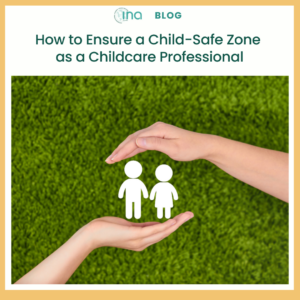 By Katie Brenneman
By Katie Brenneman
As an in-home childcare provider, one of your main responsibilities is safety. Your clients’ homes are not always going to be as geared toward child-friendliness as a dedicated care facility. You’ll need to take steps to understand the risks of the environment and minimize the potential dangers.
By prioritizing their wellness, you can empower the kids in your care to thrive. So, let’s run down a few of the key areas you need to focus on.
Minimizing Injuries
Any home is a venue for injuries just waiting to happen. While there’s no avoiding all accidents, it’s still important to make efforts to childproof the space in ways that minimize both the potential for and the severity of injuries. Some of the steps you should take include:
- Install and regularly test both fire and carbon monoxide detectors.
- Use doorstops for open doors to ensure they don’t slam on children’s fingers or limbs.
- Keep household chemicals either in high places or in cupboards that can be locked.
- Place bump guards on all protruding elements. This includes the corners of tables, door handles, and the sharp edges of furniture.
Remember, too, that you need to childproof the garage and yard. Dangerous items — such as tools and chemicals — are often kept in garages. Yards often have opportunities for accidents and escapes. Regularly check the yard for hazards and address them, such as broken glass, sharp stones, and faulty gate catches. Prevent access to the garage by placing the door remote control on a high shelf where curious hands can’t get to it.
Maintaining Security
Creating a child-safe environment is also about maintaining security. There should be no potential for unauthorized entry from outside parties or for the children to get out without supervision.
Keep the doors and windows locked, but make certain you can open these quickly and easily in an emergency. When the windows are open to circulate air, use window guards that stop kids from climbing out of them. Don’t allow access to the home to anyone who isn’t a direct family member.
But beyond this, it’s vital to keep connected to other in-home childcare providers. Look for support groups in the same area as you. This can be a great source of mutual intelligence-sharing. You can better understand current security concerns and exchange effective methods to handle issues.
Responding to Incidents
Let’s be honest, problems will occasionally occur. Prevention is always preferable, but how you respond to incidents truly makes a difference.
Firstly, you’ll need to make an assessment about how to act. For instance, consider whether an injury or illness is serious enough to take the child to a doctor. Signs of dehydration when suffering from an illness, trouble eating or drinking, and blurred vision are just a few of the symptoms that require medical attention. It’s wise to keep a list of various pediatric specialists so you can consult with the most appropriate expert.
It’s also important to protect yourself when responding to incidents. Make certain you keep records of all your actions so you can thoroughly brief parents afterward. While liability insurance isn’t always essential as an independent carer, it can safeguard against financial consequences if a parent sues you for negligence.
Conclusion
Your ongoing efforts to create a child-safe zone can enhance your positive influence as a childcare professional. By minimizing potential accidents, prioritizing security, and planning an effective response, you can establish an environment children can thrive in. Remember, though, that this shouldn’t be entirely on your shoulders. Collaborate with parents to plan measures that both maintain safety and allow you to focus on other activities that enhance their children’s ’ ongoing growth.
Katie Brenneman is a passionate writer specializing in lifestyle, mental health, education, and fitness-related content. When she isn’t writing, you can find her with her nose buried in a book or hiking with her dog, Charlie. To connect with Katie, you can follow her on Twitter.
